What is SAF?
Sustainable aviation fuel is a type of biofuel. Instead of being made from fossil fuels, it comes from plant or animal materials. As the name suggests, the fuel is designed to power aircraft.
Emissions from aviation have quadrupled since 1966 and the world’s thirst for air travel means demand is unlikely to drop. This means it is more important than ever that airlines find cleaner, more sustainable fuel sources.
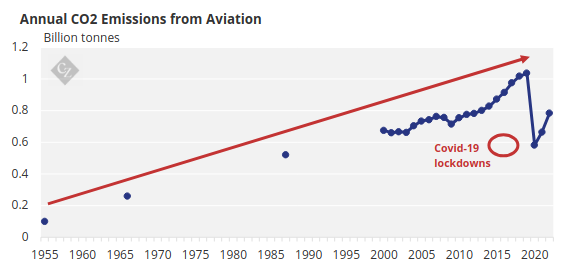
Source: IEA
SAF can help airlines cut emissions by up to 65% and next generation SAF could even reduce CO2 emissions by up to 95% compared with traditional jet fuel. And airlines that are members of the International Air Transport Association (IATA) have committed to net zero emissions by 2050 – so the race is on.
How is it Made?
There are several ingredients that can make SAF, but usually biomass or waste-based organic feedstock is used. This can come from oils or fats, municipal solid waste, sugars, cereals or even wood and agriculture residue.
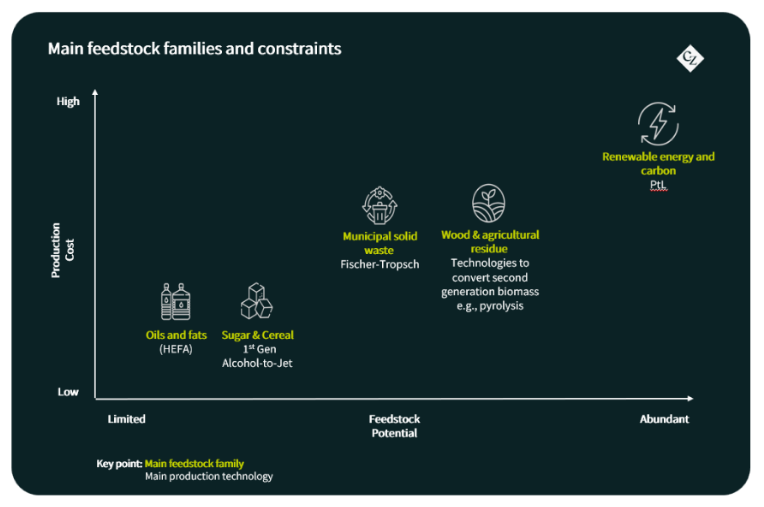
There are several processes to follow. Some are more advanced than others and some attract more investment than others. The most common is the hydroprocessed esters and fatty acids (HEFA) process. This creates SAF from vegetable oils and animal fats.

Meanwhile, the Alcohol to Jet (ATJ) process uses sugar, corn or wood feedstocks, and the Fischer-Tropsch (FT) method uses biomass.
The HEFA Production Process
The HEFA production process is the least complex. First of all, the oxygen is removed through hydro deoxygenation and the molecules are cracked, which results in separation of three products: naphtha, SAF and diesel.
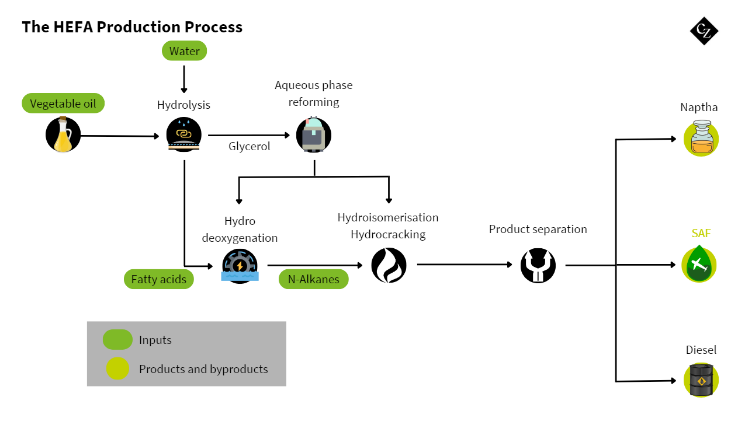
There is also the option of adding an extra step of hydrolysis, which would use existing hydrogen and reduce CO2 emissions further. However, this option is more expensive.
The FT Production Process
The Fischer-Tropsch production process is slightly more complex. The process takes any material containing carbon and breaks it down to its building clocks in the form of syngas. The Fischer-Tropsch process then combines these into the form of SAF, naphtha and diesel.
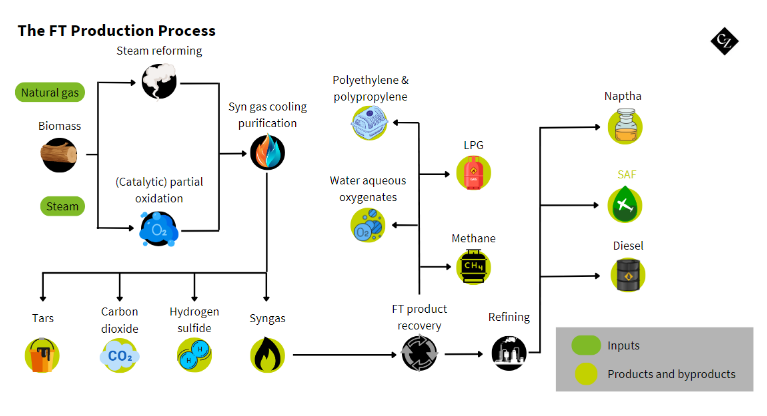
The maximum blend ratio for this process is 50%.
The ATJ Production Process
The ATJ production process is perhaps more complex as it must first produce ethanol from the raw materials such as sugar or corn. The oxygen is then removed, and it undergoes an oligomerisation process before hydrocracking and distillation into the final fuel.
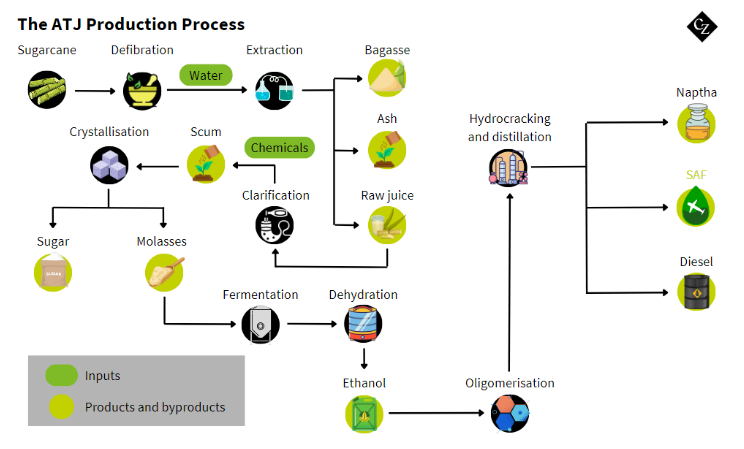
SAF Benefits and Challenges
SAF is important because it solves the challenge of aviation emissions. Very few people are willing to give up air travel, so making it more sustainable reduces environmental impacts without impacting quality of life.
Because SAF is made using biomass or waste organic materials, the feedstock is readily available – it is already produced as a byproduct of the agricultural system. Currently, over 1 billion tonnes of biomass in the US alone could be used as feedstock every year.
But there is still a long way to go before SAF can be widely adopted. Right now, SAF needs to be blended with traditional jet fuel to be used in aircraft engines. Although this still releases fewer carbon emissions, the concentration of SAF in the blends needs to be increased substantially.
It currently accounts for less than 0.1% of global jet fuel consumption, mainly because it is so expensive. It is four times more expensive than traditional jet fuel. However, as more investment is pumped into the production of SAF, the cheaper it will become.

